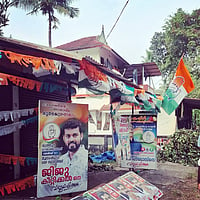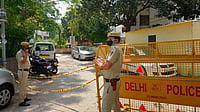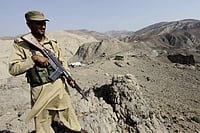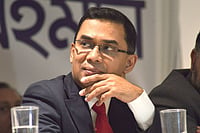To cite a few examples, Uttar Pradesh has positioned itself as the "land of the Taj," Orissa is "the soul of India" and Bastar is being promoted as "not just an escape (but)—a discovery". Henceforth, these campaigns will be created under the catch-all 'Incredible !ndia'. Underlining this, tourism secretary Rathi Vinay Jha says, "While we build a brand equity for India, the states will simultaneously use the byline of Incredible !ndia so that there is cohesion between the Centre and the individual states."
Similarly, the Centre and the respective states will have to work together in creating the right tourism infrastructure in places likely to attract the most number of tourists. Jagmohan has identified 50 such hubs, including Delhi's Red Fort, Maharashtra's Ajanta and Ellora caves, Bihar's Bodh Gaya and Kerala's Fort Cochin. In Ajanta and Ellora, Rs 130 crore (of the budgeted Rs 430 crore) has already been spent on building a green belt, running battery-operated vehicles and shifting shops and other conveniences to a new complex built three km away.
But the lack of infrastructure and inadequate facilities could well prove to be the difference between success and failure of India's bid to woo travellers. Even in the past, India's tourism policies have flopped because scant attention was paid to this front. Statistics too show that India's share in world tourism (in terms of volume) is an insignificant 0.38 per cent. Besides, there's the fact that a foreign tourist spends a mere $42-43 per day during his stay in India, compared with $350 for Singapore.
Obviously, things need to change dramatically. "We have identified tourist destinations and are now going about setting them right from the point of tourists' arrival to the point of their departure," says Kant. For once, funds may not prove to be a problem. In the Tenth Plan, the outlay for tourism has been increased nearly six-fold, from Rs 525 crore in the Ninth Plan to Rs 2,900 crore. Of this amount, approximately 60 per cent will fund infrastructure projects, while the remaining will go into advertising and marketing.
Another key objective of the Jagmohan-Kant initiative is to sell India in newer markets. While the UK, US, and France have traditionally contributed most of the inbound travellers, the tourism ministry now wishes to attract people from East Asian countries like China, Japan and South Korea as well as those like Turkey. This shift is aided by the fact that post-September 11, the international trend has shifted from long-haul travel to short-haul trips. This means most tourists now want to go to places which are nearer home.
After September 11, the Indian industry has also begun recognising the worth of the domestic traveller. The reason: foreign tourists cancelled their proposed trips to countries like India, but domestic tourism registered a more than 30 per cent growth in 2001. Worse, in the past, as Kant puts it, India concentrated on international tourism unlike other countries which first develop domestic tourism. "Under the new plan, we will actually give an impetus to domestic tourism, which will then act as a springboard to boost international tourism," says Kant.
Interestingly, the tourism industry in India is not cynical about the new initiative. They prefer the phrase "better late than never" over "a case of too little, too late", to describe the ongoing activity. Probably they are buoyed by the fact that foreign arrivals registered a growth of 16.8 per cent in October 2002, compared to the figure in the same month last year. One only hopes that the present mood of optimism and urgency in the ministry does not end with a whimper or, worse, with a cabinet reshuffle.






















